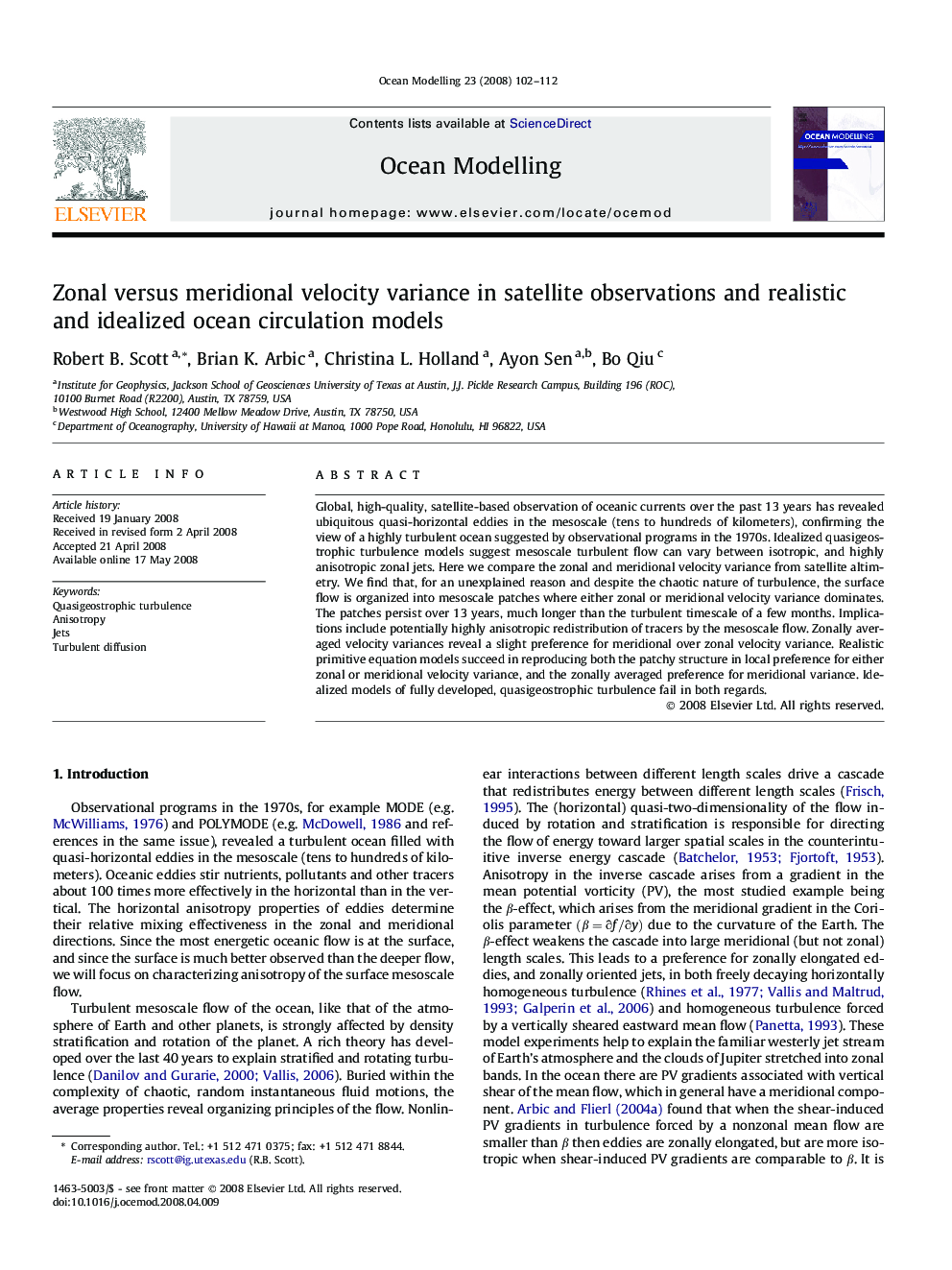| Article ID | Journal | Published Year | Pages | File Type |
|---|---|---|---|---|
| 4552595 | Ocean Modelling | 2008 | 11 Pages |
Global, high-quality, satellite-based observation of oceanic currents over the past 13 years has revealed ubiquitous quasi-horizontal eddies in the mesoscale (tens to hundreds of kilometers), confirming the view of a highly turbulent ocean suggested by observational programs in the 1970s. Idealized quasigeostrophic turbulence models suggest mesoscale turbulent flow can vary between isotropic, and highly anisotropic zonal jets. Here we compare the zonal and meridional velocity variance from satellite altimetry. We find that, for an unexplained reason and despite the chaotic nature of turbulence, the surface flow is organized into mesoscale patches where either zonal or meridional velocity variance dominates. The patches persist over 13 years, much longer than the turbulent timescale of a few months. Implications include potentially highly anisotropic redistribution of tracers by the mesoscale flow. Zonally averaged velocity variances reveal a slight preference for meridional over zonal velocity variance. Realistic primitive equation models succeed in reproducing both the patchy structure in local preference for either zonal or meridional velocity variance, and the zonally averaged preference for meridional variance. Idealized models of fully developed, quasigeostrophic turbulence fail in both regards.
